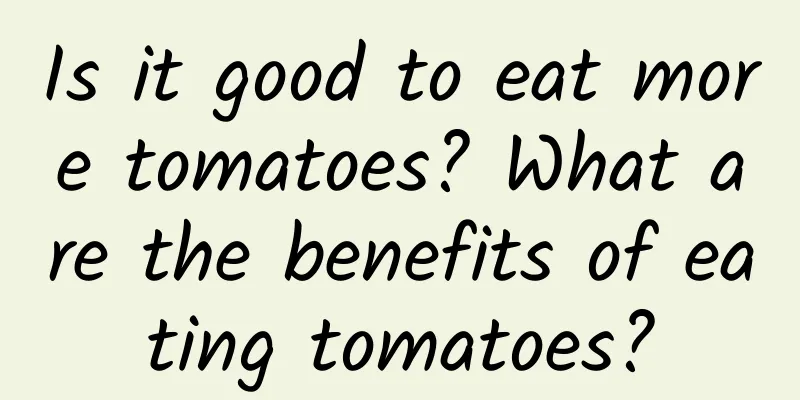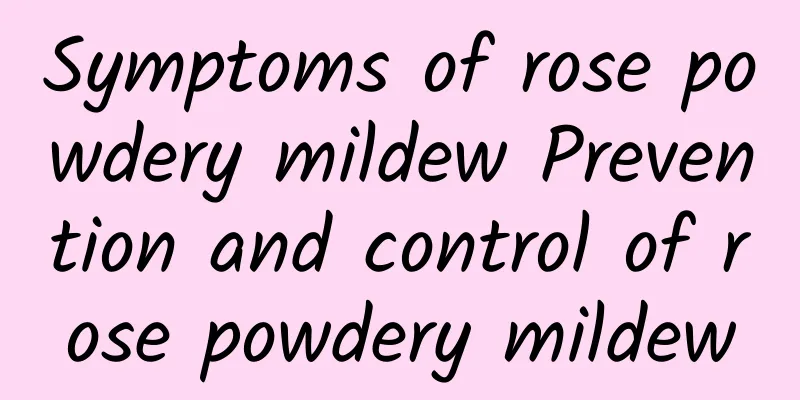Is it good to eat more tomatoes? What are the benefits of eating tomatoes?

|
Many people ask whether eating more tomatoes is good. The answer here is yes. Here are some of the effects of tomatoes: Lipid-lowering and blood pressure-lowering effectsTomatoes are rich in vitamins A and C. Their acidity is due to citric acid and malic acid. Oral administration of tomato pectin can reduce the amount of cholesterol in the serum and liver of cholesterol-fed rats. Tomato juice can reduce high blood pressure and excite smooth muscles. Antifungal effectTomatine has antifungal effects. It can inhibit certain fungi that are pathogenic to plants or humans; but it has very poor effect on bacteria. Its antibacterial principle may be the formation of a certain sterol complex in the cell membrane of fungi. Its aglycone (tomatamine) has a very poor effect. The tomatine originally extracted from tomatoes contains rutin, especially its aglycone - quercetin; quercetin can antagonize the antibacterial effect of tomatine, so the antifungal effect of tomatine is not strong. Prevent gastric cancerGastric cancer ranks second in the incidence and mortality of tumors worldwide and is a major killer that endangers people's health. Among the anti-cancer or health foods recommended by many World Health Organizations, tomatoes always rank at the top. Italian research shows that tomatoes can inhibit the occurrence of gastric cancer. People who eat tomato products 7 times a week have a 50% lower risk of gastric cancer than those who only eat them twice a week. Japanese research found that in the analysis of the levels of vitamins A, C, E, carotene and lycopene in the plasma of randomly selected residents, only plasma lycopene was significantly negatively correlated with gastric cancer. The above studies all show that lycopene and tomato products can significantly reduce the incidence of gastric cancer and esophageal cancer. In nature, tomatoes have the highest lycopene content. Lycopene can only be absorbed by the human body when heated or in the presence of oil. In particular, heating is particularly beneficial for increasing the absorption of lycopene. Because after heating, the cell walls of tomatoes are broken and lycopene can be fully released. Tomato products such as tomato juice, tomato sauce, and tomato sauce are all heated, which can greatly improve the absorption and utilization rate of lycopene by the human body. Finally, lycopene is sensitive to oxidation and will be lost when exposed to sunlight, so when storing tomato products, try to avoid light and oxygen and place them in a cool place. When cooking, you should also pay attention that tomatoes or tomato products should not be fried, otherwise the lycopene will be destroyed in large quantities. Anti-inflammatory effectTomatine has obvious anti-inflammatory effect in animal experiments. Intramuscular injection of 1-10 mg/kg or oral administration of 15-30 mg/kg to rats can significantly reduce the edema of the ankle caused by carrageenan; the effect is more obvious after adrenalectomy. Subcutaneous injection of 5-10 mg/kg for 7 days can inhibit the formation of granulation tissue. Subcutaneous injection of 10 mg/kg to mice can reduce capillary permeability. Its aglycone has no anti-inflammatory effect. Although its chemical structure is similar to sterols, its anti-inflammatory effect is similar to that of non-steroidal anti-inflammatory drugs in many aspects. The principle of its anti-inflammatory effect may be related to its anti-mediator properties. In the isolated guinea pig ileum, tomatine can antagonize the contraction reaction caused by histamine, acetylcholine, bradykinin, barium chloride, etc.; but it cannot prevent the effect of oxytocin on the uterus. In the overall test, 3-20 mg/kg of tomatine was injected intraperitoneally into guinea pigs, and it could significantly reduce the increase in capillary permeability caused by histamine; it also had a partial antagonistic effect on the reaction caused by histamine spray, but had no effect on anaphylactic shock (guinea pig egg white sensitization method). There are also reports that tomatine is often mixed with another substance with very similar chemical properties (named Gomatine, which may be an isomer of Tomatinie), and its anti-histamine effect is much stronger. Tomatine has a reversible inhibitory effect on pseudocholinesterase, and has little effect on true cholinesterase. |
>>: Effects and functions of winter melon juice
Recommend
The benefits of eating small waist mango
The taste of small waist mango is sweet. As one o...
The efficacy and function of Omega 3
Omega 3 is indeed a very popular tonic health pro...
What is Perth Glory Football Club like? Perth Glory Football Club reviews and website information
What is the website of Perth Glory Football Club? ...
The efficacy and medicinal value of cabbage and soybean water
Do you know about cabbage and soybean water? Do y...
Banana Bread Pudding Ingredients and Preparation Method
Do you know how to make banana bread pudding? It ...
How is SouthGobi Resources? SouthGobi Resource Reviews and Website Information
What is SouthGobi Resources? SouthGobi Resources L...
How is Euragio Investment Group? Euragio Investment Group reviews and website information
What is Eurazeo Investment Group? Eurazeo Investme...
The efficacy and function of corn porridge
I believe many people want to eat corn, but it ta...
Songhua Mussel Porridge
I believe many of my friends have not heard of so...
How is the New Zealand Ministry of Education? New Zealand Ministry of Education reviews and website information
What is the website of the New Zealand Ministry of...
Diseases that bean sprouts can treat, nutritional value of soybean sprouts
Many people suffer from hemorrhoids, but a small ...
Ingredients and methods of making salt and pepper corn
Salt and pepper corn is the most common dish in r...
How to pickle dried carrots How to pickle dried carrots
Dried carrots are the most common side dish in Si...
The nutritional value of sea ding The efficacy and role of sea ding
Sea clams are a kind of shellfish produced in the...
How to make raw reed root porridge
The method of making raw reed root porridge is ac...









